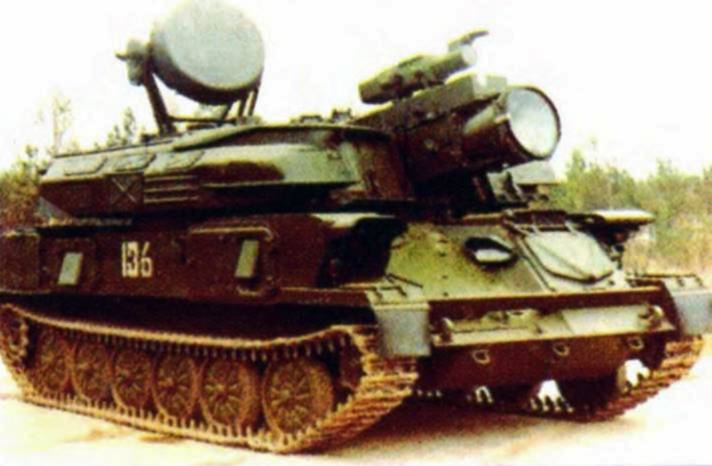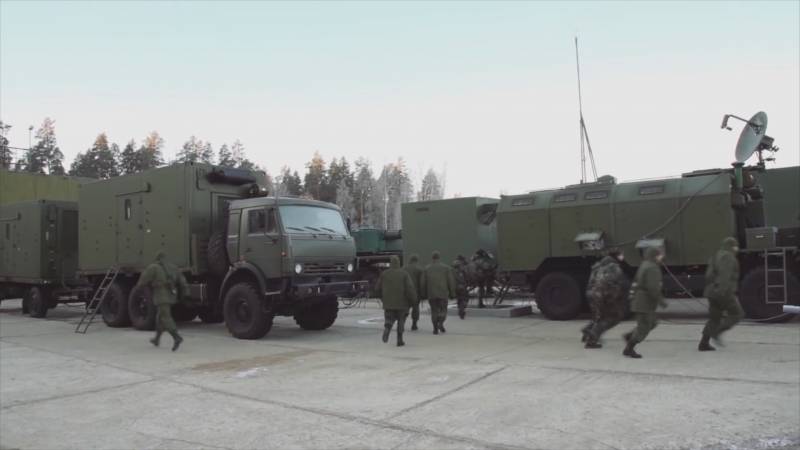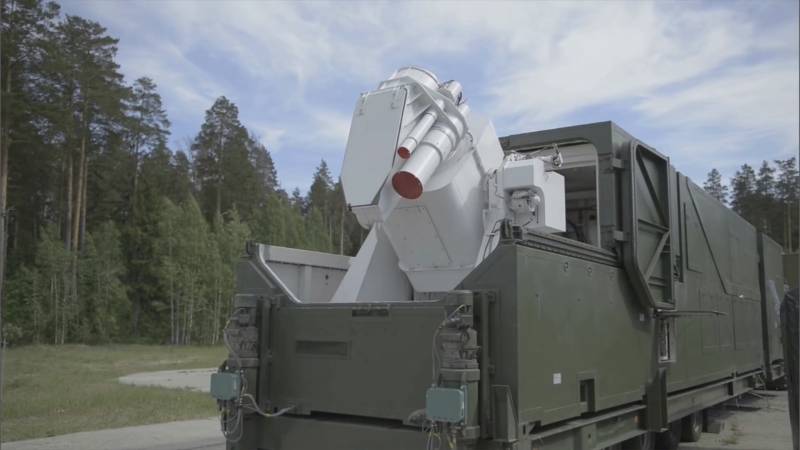Trends in the development of domestic combat lasers

The ruins of the experimental complex "Terra". Photo militaryrussia.ru
Since the sixties of the last century, our scientific and design organizations have been dealing with the topic of combat lasers. Over the past few decades, a number of projects of such weapons have been developed, designed to solve various problems. Some of the projects were brought to testing, and the latest samples even went into operation. The development of a promising direction continues, and several important trends can be noted in it.
История вопроса
The development of the first domestic combat laser began almost 60 years ago, in 1964. The goal of the program under the code "Terra" was to create a laser missile defense system capable of hitting ballistic missile warheads. Soon the Omega project was launched, the result of which was to be a laser air defense system. Both samples reached the test, but showed limited performance, and they were not accepted into service.
In the XNUMXs, the issue of using lasers in space was studied. The combat laser was planned to be placed on the Skif-D orbital station. Depending on the tasks at hand, this weapon was supposed to suppress, disable or destroy enemy spacecraft. Due to the overall complexity and changes in plans, this project did not progress further than development.

Experienced SLK "Sangvin". Photo Nevskii-bastion.ru
At the beginning of the next decade, the first combat lasers appeared, designed for use on the battlefield. The first to be tested was the self-propelled laser complex (SLK) 1K11 "Stiletto" on a tracked chassis. It was intended to suppress or destroy ground-based optical reconnaissance equipment. Then came the Sanguine complex for military air defense, made on the basis of the ZSU-23-4 self-propelled gun. His task was to influence the optics of aircraft and helicopters. The last SLK of that period was the 1K17 Compression, designed to work on ground targets.
SLCs of these types, with all their advantages, had a number of disadvantages. Due to the imperfection of technology, they were complex and expensive, both in production and in operation. At the same time, the combat characteristics did not fully meet expectations.
Also in the eighties, two A-60 flying laboratories were built. These were Il-76 military transport aircraft with combat lasers based on developments on the Skif-D theme. Two aircraft participated in versatile testing and research. In the nineties, the A-60 project was suspended, but already in the XNUMXs, new experiments began.
Modern developments
After the collapse of the USSR, work on weapons based on new physical principles slowed down markedly. Nevertheless, in the future, science and industry were able to resume work and even obtain new results. First of all, they continued experimenting with existing technology. In addition, as it became known later, completely new samples were created.

The prototype of the "Compression" complex. Photo Vitalykuzmin.net
So, in 2018, a mobile laser complex was presented for the first time, which later received the name Peresvet. By this time, the product managed to enter the troops and was in trial operation. Tests in Syria were later reported. According to known data, "Peresvets" are used in the interests of the strategic missile forces and provide protection for missile systems and position areas from reconnaissance satellites of a potential enemy.
Since 2017, the Zadira-16 development work has been carried out, the purpose of which was to create a SLK for air defense on a modern component base. In May 2022, it became known that this complex had not only reached testing, but had also been tested in the zone of the Special Operation. Zadira-16 is used to combat small UAVs. Depending on various factors, such targets are suppressed or literally burned.
Limitations and solutions
The development of any combat laser and obtaining the desired characteristics are always associated with certain technical and technological limitations. Due to this story the creation of such weapons is actually a continuous search for new solutions to cope with the limitations and obtain the desired result.
To effectively hit the target, the laser power must correspond to the working distances and features of the attacked object. This determines the requirements for the design of the laser itself and for the means of power supply. At the same time, the current level of technology and available components are of great importance. All these factors have had a significant impact on the history of domestic projects.

One of the "Compression" emitters. Photo Vitalykuzmin.net
So, the first Soviet complex "Terra" was created as a missile defense system, and it required a particularly high radiation power. This problem was solved, but due to the imperfection of technologies in the field of lasers and power supply, the complex had to be made in the form of several large stationary structures.
In the future, the industry took up lasers of lower power. The reduction in combat performance and new developments made it possible to reduce the radiating part and simplify the means of power supply. As a result, new generation complexes could already be placed on self-propelled tracked chassis or even on space carriers.
Against the background of the developments of the past, the modern Peresvet complex looks curious. As far as we know, it must work on orbital targets, which places high demands on the power and accuracy of the laser. In this case, only target suppression occurs, which limits the required power. The modern component base and new technologies made it possible to make the “anti-space” laser complex mobile. All his funds fit on several trailers, which distinguishes him from the early "Terra" and "Omega".
Means of defense
It is easy to see that the domestic industry has developed combat lasers for various purposes. Complexes of different types were supposed to hit or suppress ballistic, aerodynamic and ground targets. In the future, we accumulated the necessary experience, and the customer revised his plans for laser systems. As a result, lasers have gone out of several realms, but are finding their place in others.

Complex "Peresvet" in position. Photo by the Ministry of Defense of the Russian Federation
The early projects of stationary air defense and missile defense systems, unfortunately, did not give the desired result. Experiments have shown that defeating the warhead of a ballistic missile with a modern laser for that period is an extremely difficult task. Work on air targets was also associated with certain difficulties and limitations.
Ground-based SLCs performed better during tests. They successfully suppressed the optics of a mock enemy, both on ground and on air platforms. However, the imperfection of technology limited combat performance. The complexes were unacceptably expensive for mass production and full implementation in the troops. In addition, the very need for such SLKs was in question - it was possible to fight enemy reconnaissance means by any existing means.
Obviously, the experience of the past decades was taken into account in the preparation of modern plans and in the development of current projects. So, it was decided to abandon the use of lasers in missile defense and "big" air defense. In addition, the army is no longer interested in SLK to suppress the optics of ground vehicles. Attention and efforts are focused on other areas.
The concept, previously implemented in the Sanguine project, was developed. The modern Zadira-16 complex, like its predecessor, is designed to work on air targets. At the same time, in accordance with current trends and the situation, UAVs become its main targets. The complex is able to suppress or disable their optics. In addition, under optimal conditions, the beam power is enough to destroy the structure.

Laser part of "Peresvet". Photo by the Ministry of Defense of the Russian Federation
Mobile "Peresvet", apparently, has no direct predecessor in domestic practice. According to known data, its main task is to suppress optical reconnaissance satellites. In the past, such tasks were assigned to the developed orbital stations, and it was also about the destruction of the intended targets.
With maximum result
Thus, over the past decades, domestic science and industry have accumulated solid experience in the field of combat lasers and continue to develop this area. In recent years, two modern developments of this kind have been created and revealed, and it can be expected that in the near future they will talk about new samples of this or that purpose.
Over the past 60 years, various concepts and designs have been developed and implemented. Some of them have not progressed beyond the project or laboratory tests, while others have been fully tested in the form of prototypes. All these works and activities made it possible to determine the real potential of different ideas, concepts and samples.
Based on the results of research and testing, it was decided to abandon some of the concepts due to their complexity or inappropriateness. At the same time, viable areas are being developed, and samples of such classes are even entering service. At the same time, it is proposed to introduce combat lasers not in all areas, but only where they are able to show the maximum result. This approach has already led to the emergence of two complexes for combating satellites and UAVs - and they are unlikely to be the last.
Information